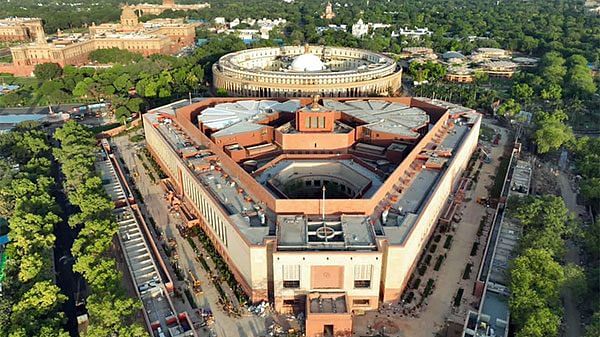Thank you dear subscribers, we are overwhelmed with your response.
Your Turn is a unique section from ThePrint featuring points of view from its subscribers. If you are a subscriber, have a point of view, please send it to us. If not, do subscribe here: https://theprint.in/subscribe/
Governance works as a cohesive network of interdependent connections between various actors. The connections are important for the coordinated function of any government. The performance of a government is both qualitative such as efficiency, effectiveness and economy dimensions and qualitative protracted as outcomes and impact on society. The performance of a government should be evaluated against the datum of globally accepted principles of governance.
Macro (hierarchical) and micro (relational) governance initiatives continue to be developed in isolation rather than interactively. Government‐driven hierarchical governance endeavors that guide reforms and practice are disconnected from micro‐level interactions being unable to account for macro level policy making.
Hierarchy and interdisciplinary approach to governance
Institutional structures and human agencies have to work in tandem to reduce the gap between hierarchical and relational governance. Micro‐level encounters between the people and bureaucracy give rise to social structures that constitute the constraining and enabling forces through which macro‐level infrastructures are altered and reproduced over time. The coexistence of institutional structures and human agencies, emhasises how macro and micro governance devices shape each other’s structure. Governments are traditionally responsible for hierarchical governance infrastructures for drafting nationwide policies, enhancing resource‐allocation efficiency, containing costs, and improving people’s experience with services. Yet, evidence demonstrates that heavily relying on hierarchical governance constitutes a time‐consuming and expensive undertaking, which rarely translates into higher service effectiveness and quality of care.
Digitization and delivery
Widespread digitization of data and services in India has largely improved macro-micro integration of governance, though it has not reached the desired level. This can be illustrated with inspections of factories in the MSME sector. There is a requirement to inspect all factories in India once in a year. There are not enough inspectors. For an all-India reach, each of the 953 sanctioned inspectors would have had to inspect 337 registered factories in a year, in 2021.Given the vast universe of inspection, the inspectors may “target” and “harass” several factories/establishments, exhibiting state power and also attempting to secure bribes. The president of the Maharashtra Industry Development Association has admitted, in a media report in May 2024, that in many cases, safety inspection and certification were done “on an “understanding” between the auditors and factory owners or managers”. Employers are as guilty as the labour inspectors, and tackling the “supply side” of “rent seeking” is as important as reforming the “demand” side.
Conversely, digitization has helped close the divide between macro and micro governance in areas where personal interventions between officials and the public are eliminated or minimized. It has found success in direct and indirect tax compliances. Tax collections have increased as a result of non-contact methods of transactions. More money has reached the beneficiaries in social welfare schemes with Direct benefit transfers (DBT) to respective individual bank accounts without manual conduits. This has also reduced the time taken and cost to effect these transfers. Such relational governance is associated with micro‐level mechanisms aiming at facilitating interactions via reciprocity, trust, altruism, solidarity, and shared norms that are embedded in government-people relationships. This process also eases a key challenge of hierarchical governance which constitutes its detachment from the micro‐level realities. In a mixed, digital and contact approach to delivery, we argue that the theory of digital structuration provides an opportunity for narrowing the gap between hierarchical and relational governance. But the gap by way of duality of partial digitization where contact is essential for delivery through human agency, the structuration theory is defeated. These interactions give rise to social structures, which constitute the constraining and enabling forces through which hierarchical governance arrangements become ineffective. Enablers should exist at both micro‐ and macro‐levels. A stronger involvement of service users in the process of planning represents an opportunity for enhancing their experience and satisfaction with delivery of governance and promoting a culture of openness and mutual learning. Hierarchical and relational governance developed in isolation, suggest the need to integrate these macro and micro initiatives into a holistic framework. Contact micro governance needs to be further minimized and quality of contacts should be improved where it is absolutely necessary
Tailpiece: Using a cliche’, governments have no business to be in business. In any government, the officials should be motivated to create massive wealth for private entrepreneurs without creating commensurate riches for themselves. In the process of governance the role of the recipients should not be overlooked. In any nation, a vast majority of citizens should be ready to willingly cooperate with the state, despite complaints and grievances over some of its stringent rules and policies.
These pieces are being published as they have been received – they have not been edited/fact-checked by ThePrint.


